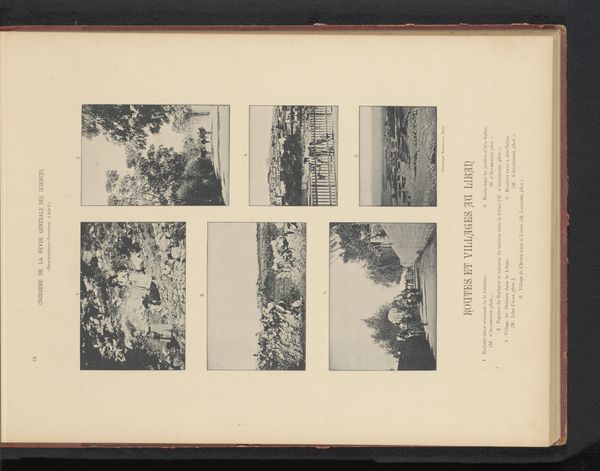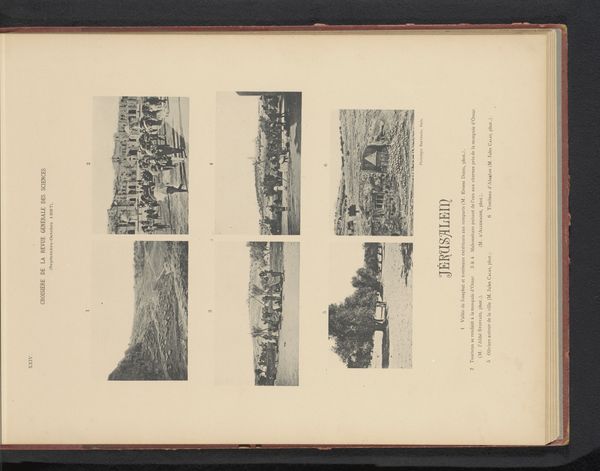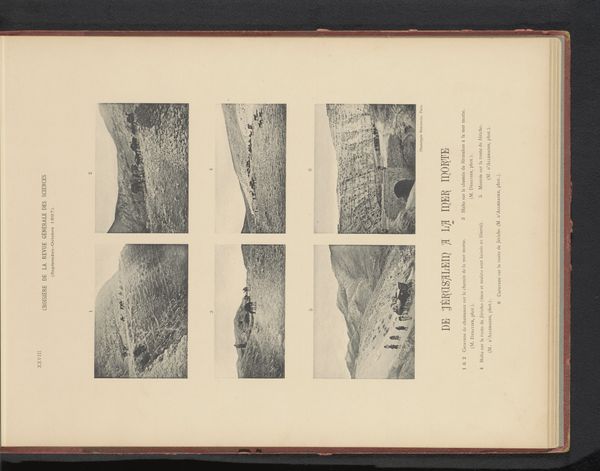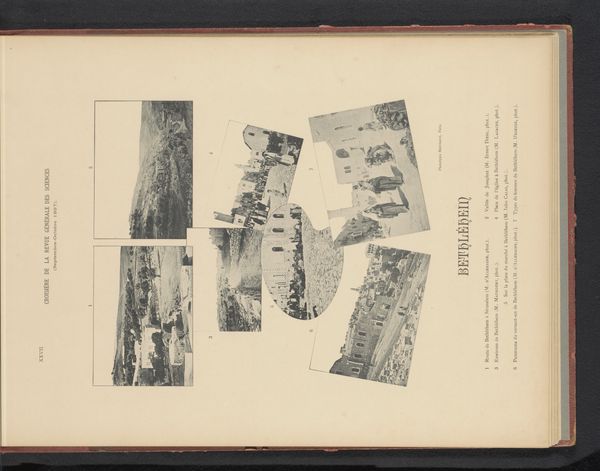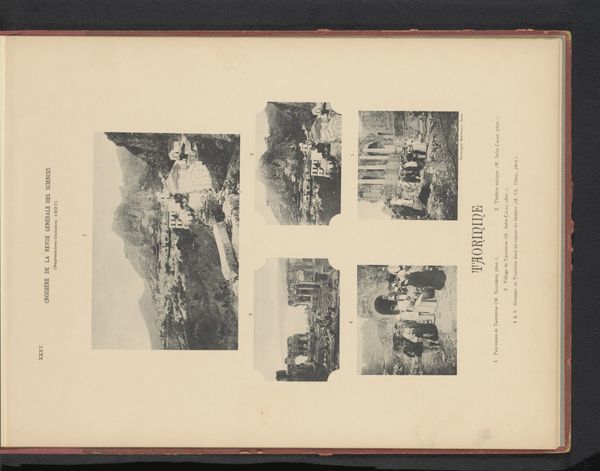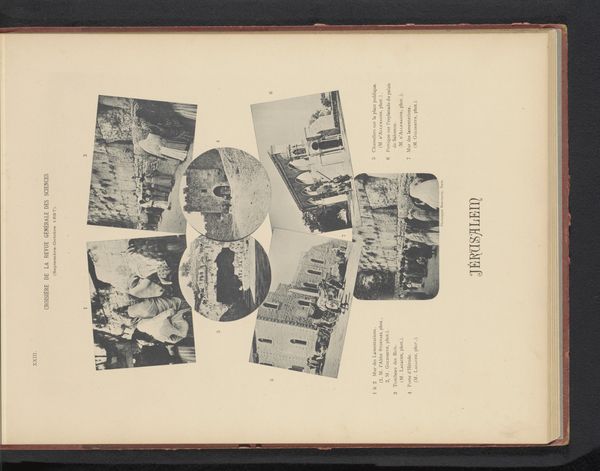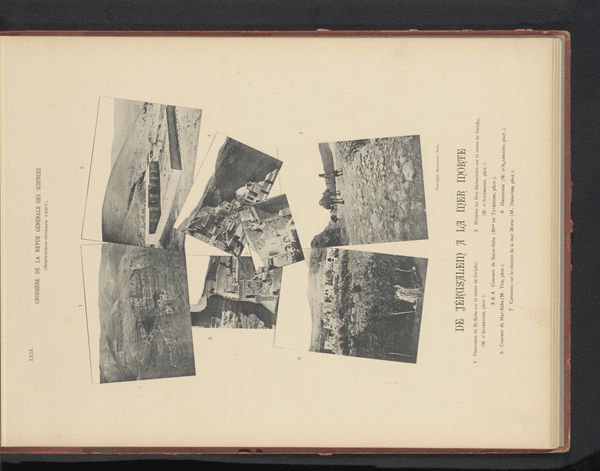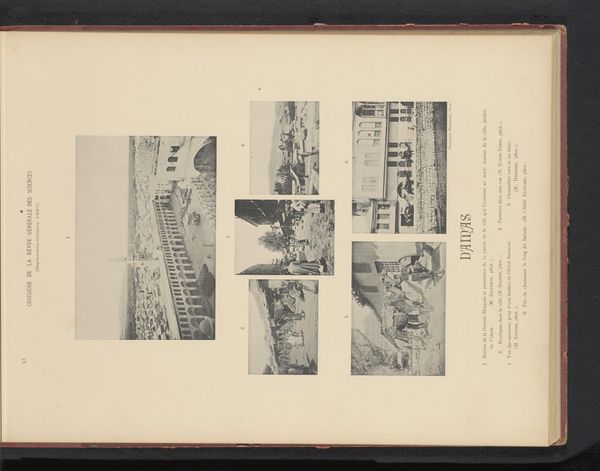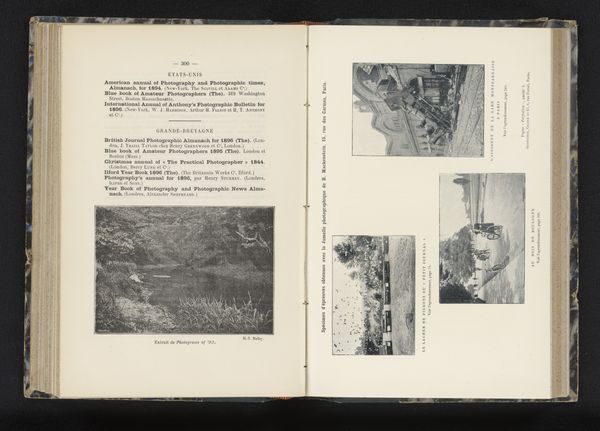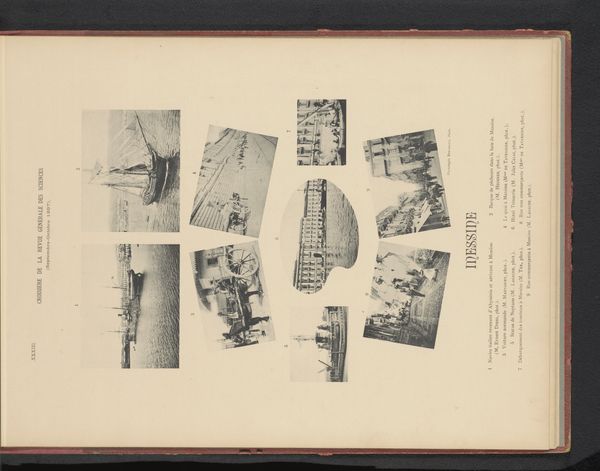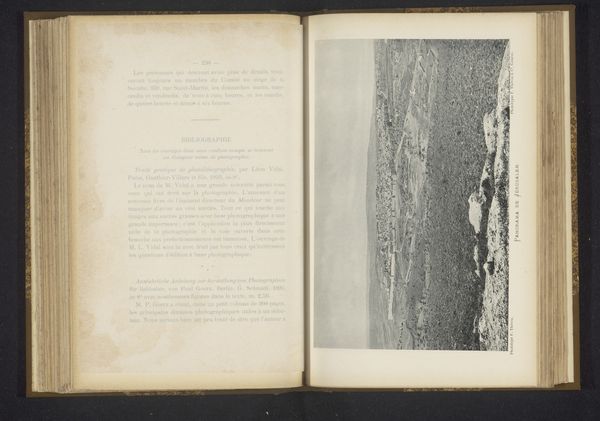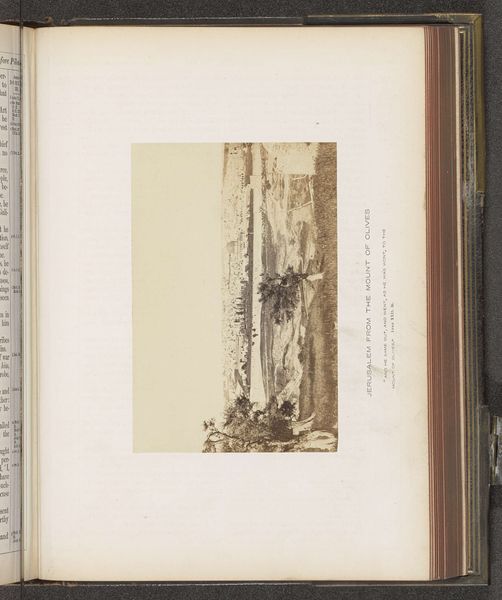
print, photography
# print
#
landscape
#
photography
#
photojournalism
#
watercolor
Dimensions: height 355 mm, width 293 mm
Copyright: Rijks Museum: Open Domain
Editor: This print, titled "Six Views of the Jordan and the Dead Sea," created before 1898 by various artists, uses photography to capture these landscapes. There's a definite sense of stillness here, almost melancholy, particularly in the views of the Dead Sea. How do you interpret this work, considering the time it was made? Curator: These photographs offer a powerful lens through which to examine late 19th-century colonial perspectives. Think about the act of documentation itself. What does it mean to capture and display these landscapes? The Jordan River and the Dead Sea hold immense religious and historical significance. By photographing them, colonizers visually claimed and commodified these sites, stripping them of their layered cultural meanings. How might these images have shaped European perceptions of the Middle East? Editor: That’s fascinating. I hadn't considered the act of photographing as an act of claiming. So, you are saying that it reflects a power dynamic? Curator: Absolutely. Photography during this period was intrinsically linked to colonialism's desire to survey, categorize, and control. The apparent objectivity of the photographs obscures the biases of the photographers and the intended audience. The distribution of such prints served to reinforce the narrative of the colonizer as knowledgeable explorer, further Othering the people living in these regions. The choice of subject and framing—the emphasis on desolate landscapes—served particular agendas. Editor: So, it's not just about the place, but about who is looking and why. I now see how seemingly simple landscape photography can be so much more complex when viewed through a historical and political lens. Curator: Exactly! It invites us to challenge the idea of a neutral observer and critically assess how images can perpetuate specific ideologies. Editor: Thank you, that perspective really deepened my understanding of these images. Curator: Mine as well! It’s a great reminder of the power of art to promote discussions and reflect on our shared human experience.
Comments
No comments
Be the first to comment and join the conversation on the ultimate creative platform.

